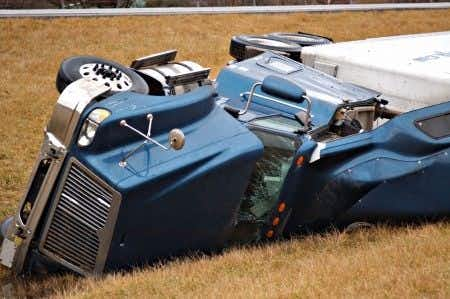This case involves a rear-end collision that occurred on an interstate highway. The plaintiff was driving down the highway in a black tractor-trailer traveling approximately sixty miles per hour. The plaintiff’s speed was determined by the data recovered from the data control monitor that was installed within the truck’s engine. The plaintiff was struck from behind by another tractor-trailer, which hit him at such a faster speed that he lost control of his vehicle and swerved into a large ditch. As a result of the accident, the plaintiff sustained fatal injuries and died three weeks after the event in question. The defendant was charged with reckless driving, and there was a dispute as to the speed of the defendant’s truck at the time of the accident. A vehicle accident reconstruction specialist with ACTAR certification was sought to opine on the case.
Question(s) For Expert Witness
1. How can the speed of a tractor trailer be determined?
Expert Witness Response E-006657
Accident reconstruction with larger vehicles (RV's, tractor trailers, or larger SUV's) is usually a more challenging calculation due to the increased number of variables. For tractor trailers, it is easiest to begin the analysis by understanding that there are essentially two components of the tractor trailer, the tractor and the item(s) being towed. By separating the two components, the effect of any impact can be discerned. Looking at the individual model of the truck, its usage (mileage and any custom modifications), the road it was on at the time of the accident, and the size, sex, and health of the drivers are critical to determining accident specifics. Regarding the item being towed, the shipping records indicating the exact items being shipped and the storage unit towed behind the truck are also important for any reconstruction calculation. By taking these factors into account, I can run numerous simulations to discover closing speed, equivalent barrier speed of the accident, crushing forces involved, injury biomechanics (G's), kinematics experienced, and overall speed at the time of the impact.
About the author
Michael Talve, CEO
Michael Talve stands at the forefront of legal innovation as the CEO and Managing Director of Expert Institute. Under his leadership, the Expert Institute has established itself as a vital player in the legal technology arena, revolutionizing how lawyers connect with world-class experts and access advanced legal technology. Michael's role involves not only steering the company's strategic direction but also ensuring the delivery of unparalleled intelligence and cutting-edge solutions to legal professionals. His work at Expert Institute has been instrumental in enhancing the capabilities of attorneys in case preparation and execution, making a significant impact on the legal industry's approach to expert consultation and technological integration. Michael's vision and execution have positioned the Expert Institute as a key facilitator in the intersection of law and technology.



